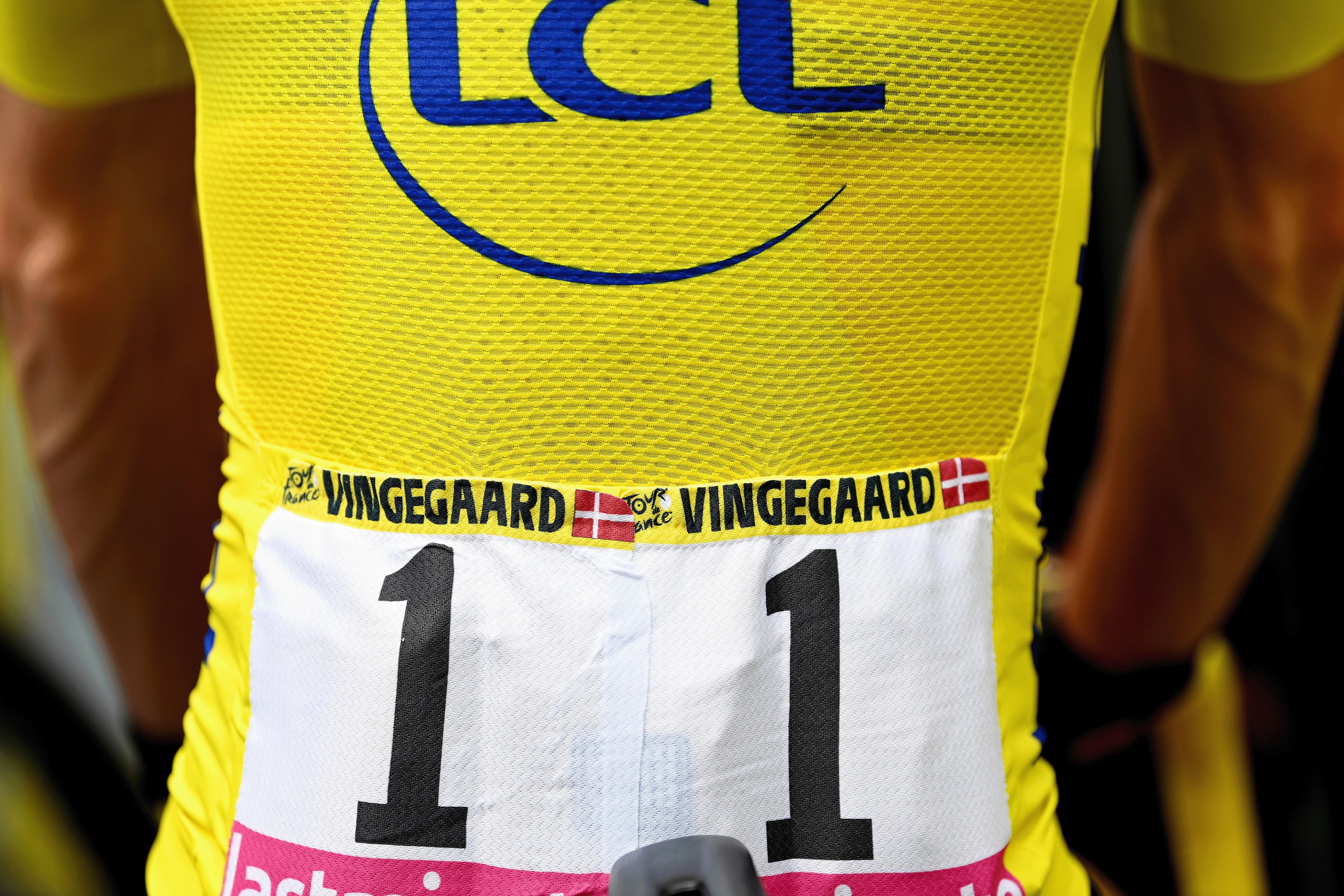
In sport, a number can carry a lot of weight. In rugby or American football, a number denotes a position on the field. In American football clubs, a number is often so closely associated with a player that when that player retires, the number is retired alongside them - never to be used again. In ice hockey, skaters choose their own numbers, usually picked for personal or historical significance. In the Tour de France, and cycling more broadly, the meaning is a little more arbitrary.
You’d be forgiven for assuming that at the Tour de France the numbers on a rider’s back mean little to nothing. And you’d be correct. Almost. But what they lack in meaning, they very much make up for in satisfying logic. With one or two interesting exceptions. Here’s a quick run-down of what is, admittedly, an inexact science.
Tour de France: Who is Number 1?
If you have any knowledge at all about numbers in cycling, you probably know that number 1 is worn by the previous year’s victor. Jonas Vingegaard (Jumbo-Visma) wore 1 in 2023 and he will wear it again at the 2024 Tour de France, following his successful defence of the maillot jaune.
Statistically speaking, the number 1 bib, or dossard, to use the French term, is the most successful in terms of previous victories. A total of 27 Tour wins have come from riders sporting the single digit on their backs; the highest of any bib number.
In many ways it’s a self-fulfilling prophecy - the previous year’s best rider has an above-average chance of winning the race once again. In fact, it’s one of the few races within the sport of cycling where defending your title has any real meaning.
The team of the previous year’s winner fills out the rest of the single digits. Dossards 2-8 were worn by Jumbo-Visma last year, ordered alphabetically.
Why is Number 13 upside down?

The next predetermined number is 11. This number goes to the previous year’s runner-up. In 2023, this number went to Tadej Pogačar of UAE Team Emirates. The rest of his team normally would've filled out numbers 12-18, although they went different from the norm without any rider wearing the number 13. Adam Yates was instead riding number 19 with Felix Großschartner, the rider meant to wear the upside-down 13, likely opting not to wear the unlucky digit.
That means the last rider to don the upside-down dossard was Steven Kruijswijk in 2022 for Jumbo-Visma. Where cycling is pragmatic about its numbering system, many riders still retain a superstition over that number and choose to wear it upside down. (Kruijswijk crashed hard on stage 15 in 2022 and was forced to abandon the race.)
The third set of numbers is 21-28, traditionally worn by the team of the rider who was third placed in the previous year’s Tour. In 2022, this was Geraint Thomas, so Ineos Grenadiers claimed the right to these dossards despite the Welshman not being present. The British team opted to grant former Tour winner Egan Bernal the number 21 despite not being the leader, with young star Carlos Rodríguez ending up as their best rider despite starting with the number 27 on his back.
If any of the previous year’s top three are not present at the race, their teams will award the numbers 1, 11, or 21 to whichever rider is their designated leader.
Beyond the three previous podium spots is where things get a little sketchy. Theoretically, the numbers proceed 31-38 for the next team, 41-48 for the one after, and so on, but the reasons behind the exact placement of teams are not entirely clear; blocks have been allocated alphabetically, or by team ranking. There are exceptional cases though.
In 2023, the next highest available number, 31, was awarded to David Gaudu after he finished fourth in the 2022 Tour de France - the highest-placed French rider. The rest of the 30s were taken up by his teammates on the long-standing French squad.
The Tour de France’s mythical number 51

The number 51 retains an almost mythical significance to the French. Named the dossard anise after a brand of aniseed aperitif launched by Pernod in 1951, the legend was born following a successful decade for the number: four riders won wearing 51 within 10 years, beginning with Eddy Merckx in 1969 and ending with Bernard Hinault in 1978.
Since then, it’s been regarded as lucky, and is often awarded to a prominent French rider – Pierre Rolland wore 51 in 2013, Thibaut Pinot in 2019 and 2020 and Julian Alaphilippe wore it in 2023 for the second time in his career - In reality, it’s actually only the fourth-most successful dossard, after 11 and 2, sharing the ranking with 15 and 21.
Red and yellow
After the numbers have been allocated, that’s that. In terms of digits, at least. Once the race kicks in, there are colours that can be added to dossards to denote different things. Most notably, it used to be red but is now gold. Each day, the rider wearing the red number used to be the rider deemed to have been most aggressive during the previous day’s stage. In 2023, this red number was exchanged for a gold dossard due to the competition's sponsor, Century 21. Combativity is decided by a jury following each stage alongside a new vote made by members of the Tour de France Club.
The second colour visible within the peloton is yellow. Not to be confused with the yellow of the leader’s jersey, yellow numbers are awarded to the riders from the team who are recognised with the team classification at that point in the race. As a result, these may change hands just as the maillot jaune may shift from one set of slender shoulders to another, as the race progresses. Jumbo-Visma won the team competition in 2023 alongside the yellow jersey itself.







